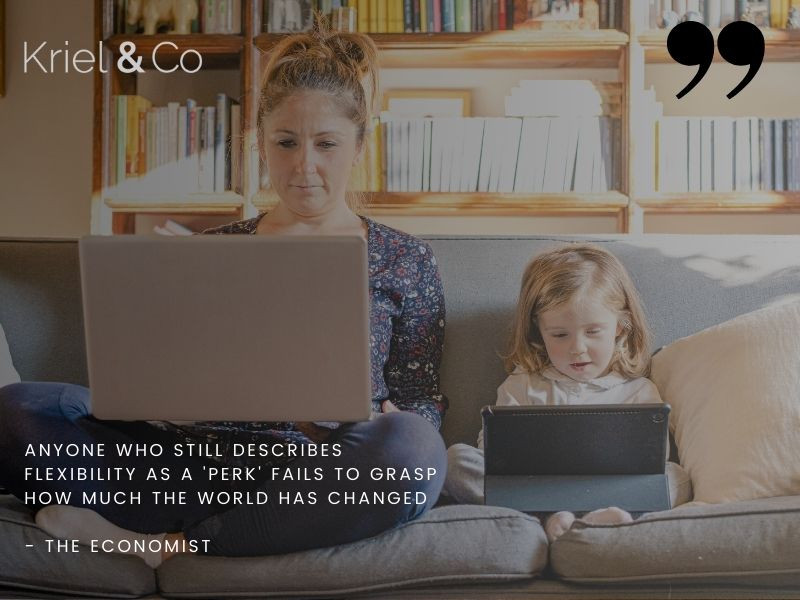Why top professionals are going independent
20 February 2018
"...talented people are going independent because they can choose what to work on and with whom to work..." – The rise of the supertemp, Harvard Business Review."
Consulting in the format of part-time executive is becoming a viable alternative for highly skilled professionals who crave flexibility not offered by traditional 'big firm consulting', with the intention of still undertaking challenging and meaningful work. Gurus are going independent, and companies are starting to follow the talent. Learn more about this unique model of consulting and how it adds value to both professional and company.
How productive is the average employee?
Various work-place research suggests that most employees aren't very productive during their required office hours. A survey conducted among roughly 2000 office workers in the UK suggests that after deducting time for eating, coffee breaks, socializing and social media distractions most employees are only productive for 2 hours and 53 minutes per day. Respondents were initially asked, ‘Do you consider yourself to be productive throughout the entire working day?’ to which 79% admitted that ‘no’ they weren’t. Just a fifth, believed they were productive throughout the day.
Needless to say, we will not consider conducting such a survey among South African office workers. This is a zero-sum argument which reminds us of that scene from The Office where the consultants, Bob and Bob, recommend everyone be fired. This is of course not realistic. Many employers have turned to flexible work strategies to improve productivity, but is this the answer?
Flexible workplace trends and high-end work
Google's 2020 Workplace report argues that flexible work will be the defining characteristic of the modern workplace. Mainly driven by the working preferences of Millennials, the world's top employers have started aligning their employee value propositions around flexibility to some degree. At the time the report was published, the data suggests that 32% of companies will introduce a flexible work offering by 2018.
Technology and more particularly the cloud is the main enabler for flexible work, with JLL arguing that technology transforms the office from a place of work to a place of collaboration. Most evident in the rise of the activity-based work environment, dedicated desks are replaced by different spaces of 'concentration', with employees moving in and around the office in a 'plug and play' style to best suit their working needs. Productivity is enhanced by designated quiet zones (signaling to a colleague that someone is not to be disturbed), where a lounge area accommodates collaboration and social engagement. People arrive and leave the office as it suits their schedule and personal commitments, as long as work is performed on time and all meetings are attended to. Technology empowers the work force to work and collaborate from anywhere.
Whilst the model has been successfully implemented in various industries showing signs of improved employee productivity, it still poses many human resource challenges. However, a trend is clear that high-end work, senior or leadership positions that best align with flexible work models given the level of commitment, motivation and accountability associated with the role.
Do top professionals still want to be permanently employed?
"The Rise of The Supertemp" by HBR argues that high-end jobs will become increasingly contingent in coming years as project-based work has become more attractive for top-professionals than traditional jobs. The article references the following research:
- McKinsey research in 2011 found that 58% of U.S. companies expect to use more temporary arrangements at all levels in the years ahead (nearly triple the number that plan to offshore more jobs).
- Similar to South Africa, European labour laws make it difficult and costly to fire anyone. In the European Union, temporary work is better established than it is in the United States. According to Booz Allen Hamilton, the UK market for interim managers is one of the best developed, with annual growth in the market for interim executives estimated at over 20%.
- Lauren Doliva, the Managing Partner of Heidrick & Struggles’s new Chief Advisor Network, states that baby boomers’ retirement will shrink the supply of executives even as demand holds steady—increasing the need for temporary talent and senior advisory resources.
"In the market for top professionals, independent talent is defined by special skills. HBR argues that “professionals start to behave as if they were George Clooney: Given a choice, they pursue their own stream of interesting projects. Though it may seem strange to compare independent lawyers, marketing gurus, CFOs, engineers, and consultants to a movie star, talented people are going independent because they can choose what to work on and with whom to work.”
Therefore, the Supertemp market for top professionals offer a viable platform for highly skilled people who crave flexibility but want to stay in the game.
Contingent labour replaces an unproductive traditional labour model. If the average employee is only productive for 2 hours and 53 minutes per day, is it not more cost-effective to replace a top professional's salary with a Supertemp consultant who adds consistent (if not better value) for the time the organization needs it? This puts overheads, expensive full-time salaries and motivational problems into a different perspective.
It's a daring statement to make, and challenges employers and companies to take a hard look at how much value they are receiving from their top performers. At Kriel&Co, we assume the roles of interim manager or executive for high-profile projects and companies. Consider that the average Chief Information Officer (CIO) has a challenging start in driving significant technological change in an organization. However, after a successful change effort, most of CIOs go into 'maintenance-mode' with their projects, becoming bored and looking for the next professional challenge – leaving their full-time jobs for the next opportunity.
Generally committing for a minimum of 6 months to a project or company, Supertemps are accountable for their client's success and share in its journey. Consider a Supertemp the next time you’re contemplating your next top manager, and retain them for the time you need – without the coffee breaks or social media distractions.





